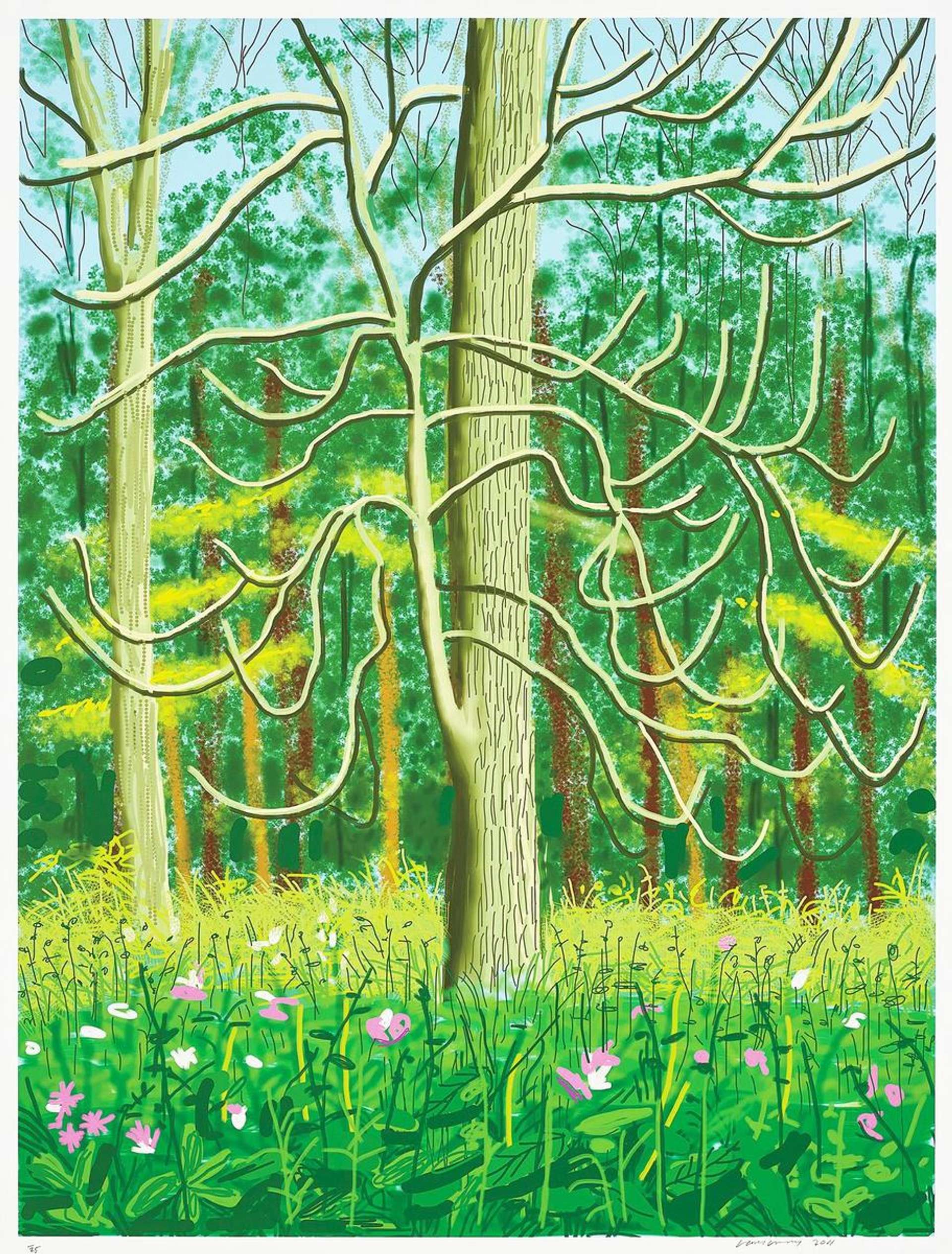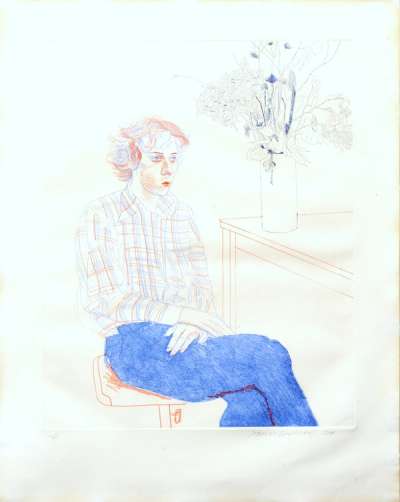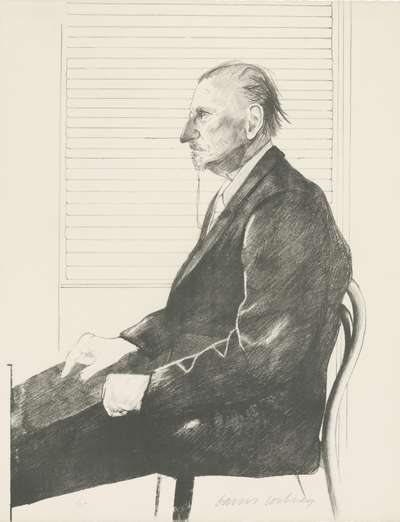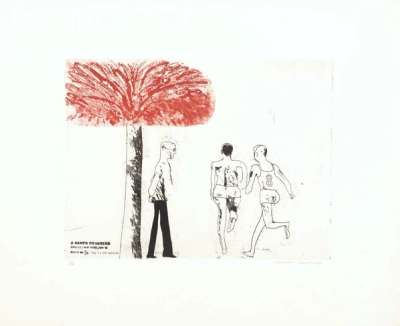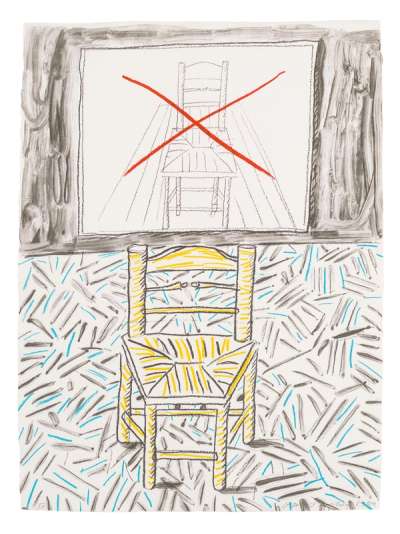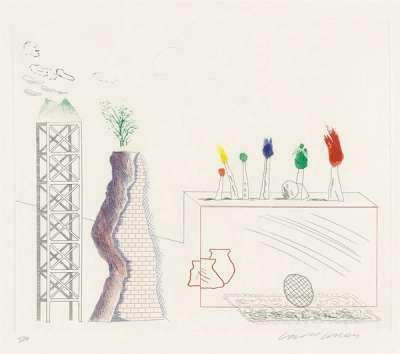David Hockney’s Etchings And Their Artistic Significance

 The Older Rapunzel © David Hockney 1969
The Older Rapunzel © David Hockney 1969
David Hockney
654 works
David Hockney is one of the most influential British artists of the 20th century. His artistic approach spans a wide range of media, from traditional techniques like painting, drawing, and etching, to more contemporary forms like photography and digital art. His subjects include portraits, landscapes and still life, with themes that often encompass love, sexuality and his reflections on art history.
The World of David Hockney's Etchings
Hockney's foray into etching began in the early 1960s, during a period of substantial cultural and artistic upheaval. He emerged as a major figure within the British Pop Art movement, but his style was never confined within its boundaries. Hockney's etchings display a rich stylistic variety, with influences ranging from Cubism and Expressionism to contemporary popular culture. His remarkable etchings reflect an eclectic blend of traditional methods and innovative experiments, spanning various subjects and themes – from personal introspection to social commentary, and from mundane landscapes to imaginative depictions of fairy tales.
Hockney's etchings have been not only a crucial component of his illustrious artistic career, but also a pivotal contribution to the world of modern art, as he reinvigorated etching’s status within contemporary art. Etching has significantly shaped the trajectory of his art, and as such his works in this medium are of great artistic and cultural significance. Despite his later ventures into painting, photography and digital art, his etchings remain an integral part of his oeuvre.
Shaping an Artistic Visionaire: Hockney's Upbringing and Early Inspiration
Born in 1937 in Bradford, England, David Hockney’s artistic journey started during his childhood, where he had a fascination with Picasso and Matisse. His formal art education began at the Bradford School of Art when he was 16, followed by the prestigious Royal College of Art in London. At the Bradford School, Hockney explored a range of mediums and styles, sparking an interest in the versatility of printmaking – particularly etching. His exposure to London's vibrant art scene at the Royal College further broadened his artistic horizons and artistic influences.
Hockney's early forays into etching were both exploratory and audacious, as he embraced the experimental spirit of the era. His first etchings, completed while still a student, were characterised by a unique blend of traditional techniques and contemporary sensibilities. He leveraged the medium's potential for narrative and detail, and its inherent combination of precision and spontaneity resonated with his emerging style.
Hockney's early life and influences set the stage for a career marked by constant experimentation and innovation. His initial explorations in etching demonstrated his propensity for storytelling, precise technique and willingness to push the boundaries of traditional mediums - traits that would go on to define his broad and impactful artistic legacy.
Transforming Tradition: Hockney's Unique Approach to Etching
Etching as an art form has a rich history, involving a complex process of incising a design onto a flat surface by cutting grooves into it. The process begins with coating a metal plate (usually copper or zinc) with a thin layer of waxy ground resistant to acid. The artist then uses an etching needle to draw the intended image onto the coated plate, and the exposed lines are then etched by immersing the plate in an acid bath. Ink is then applied into the etched lines and the plate is run through a press with damp paper to produce a print.
Hockney is known for his innovative and experimental approach, bringing a unique flair to this traditional medium. He wasn't afraid to modify and adapt the established etching process to better suit his artistic vision. His technique combined classical methods with his own unique modifications, such as his use of 'soft ground' etching. This technique involves laying a sheet of paper or fabric over the wax ground and tracing the image onto it. The pressure transfers some of the soft ground onto the paper, leaving more of the plate exposed for etching. This method allowed Hockney to achieve softer lines and a more varied range of textures in his prints.
Hockney also incorporated aquatint, a variant of etching, to create tonal effects rather than lines. This allowed him to create large areas of shade and colour, adding depth and dimension to his works. Moreover, he often mixed etching with other printmaking techniques, such as lithography and screen-printing, showcasing his willingness to cross the traditional boundaries of art forms. His style and methodology has varied greatly across his body of work, reflecting the range of influences and themes he explored. His adaptability and innovation in etching techniques provided him with a powerful medium to express his vision.
Master Strokes: Hockney’s Major Etching Works and Series
A Rake’s Progress series (1961-1963)
His first major etchings emerged as part of A Rake’s Progress, a series of 16 etchings that were created between 1961 and 1963. Inspired by the narrative sequence of the same name by 18th-century artist William Hogarth, Hockney adapted the theme to chronicle his initial visit to America. The series is both introspective and societal, offering biting satire and personal reflections. His etchings effectively captured the cultural contrasts and personal revelations he experienced, marking a significant step in his artistic journey.
Hockney's style in this series is marked by strong lines and sparse use of shading, giving the etchings a stark, dramatic quality. He also incorporates text into several of the prints, adding an extra layer of narrative to the images. This series marked a turning point in Hockney's exploration of printmaking, demonstrating his growing mastery of etching techniques and his ability to use the medium to convey complex narratives and themes.
Illustrations for Six Fairy Tales from the Brothers Grimm series (1969)
Hockney's Illustrations for Six Fairy Tales from the Brothers Grimm series comprises 39 etchings based on six of the fairy tales from the collection by the Brothers Grimm. Rather than illustrating the tales in a straightforward manner, Hockney chose to approach them from an almost abstract perspective, as he focused on the objects and settings that form the fabric of the stories.
One of the remarkable aspects of this series is Hockney's innovative use of the 'soft ground' etching technique, which allowed him to mimic different textures within his prints. He used materials such as lace, leaves and fabric, imprinting their textures directly onto the etching plate. This technique helped him to create a richly detailed and tactile series of images that bring the strange world of the Grimm fairy tales to life. Also notable is Hockney's use of the aquatint process in these etchings, which allowed him to create large areas of tonal gradations, adding depth and contrast to his compositions. His innovative use of these techniques expanded the possibilities of etching as a medium and marked a significant progression in his work.
More Than Lines and Shades: The Artistic Significance of Hockney's Etchings
Hockney's etchings stand as significant markers of his personal artistic journey in the wider context of the Pop Art movement and the evolution of contemporary art. Though primarily known for his vibrant, large-scale paintings, Hockney's etchings made a substantial contribution to Pop Art. Hockney's pioneering approach to etching played a vital role in reinvigorating interest in printmaking during a time when it was losing its popularity to emerging forms like photography and digital art. His bold and vibrant etchings offered a compelling counterpoint, demonstrating that traditional mediums could still hold a powerful contemporary relevance.
His impact on the artistic community has been profound and long-lasting. Hockney's fearlessness in pushing boundaries and experimenting with various mediums inspired other artists to explore and diversify their own artistic practices. His unique blend of traditional etching methods with innovative modifications paved the way for subsequent generations to expand their creative boundaries. Artists such as Richard Hamilton and Peter Blake have acknowledged Hockney's influence, highlighting his ability to continuously redefine and expand the possibilities within the art world.
From Creation to Criticism: Reception and Value of Hockney's Etchings
Hockney's etchings were met with both acclaim and curiosity upon their initial release. While his etchings were less publicly visible than his large-scale paintings, they were well-received by those within the art world who recognised their innovative qualities. Critics lauded Hockney's ability to push the boundaries of etching, incorporating novel techniques while maintaining the medium's historical roots. However, as with most innovative approaches, Hockney's etchings also faced some resistance, particularly from those who adhered to more traditional notions of printmaking.
As Hockney’s status as a leading figure in contemporary art solidified, his etchings have been reassessed and recognised for their contribution to his oeuvre and to the wider art landscape. They are now celebrated for their experimental spirit, narrative depth and their role in redefining the possibilities of etching as a medium for contemporary expression. In terms of the art market, Hockney's etchings have grown significantly in value and popularity. Hockney himself has often expressed a desire for his prints to be accessible to a broader audience, which has influenced the way his etchings have been produced and priced, ensuring they hold a special place within the market as pieces that balance artistic significance with relative accessibility.
The reception and value of Hockney's etchings have seen a positive trajectory over the years. From their initial reception to their current standing, they have come to be recognised as integral parts of Hockney's creative legacy and as valuable contributions to the field of contemporary art.
A Lasting Impression: The Enduring Influence and Importance of Hockney's Etchings
Hockney's impact on the realm of etching has been profound and transformative. His daring innovations and creative vision revitalised this traditional medium, inviting a new generation of artists to explore its potential. Through his unique blend of classical and contemporary techniques, he broadened the scope of etching, offering fresh narrative possibilities and artistic expressions.
The artistic significance of Hockney's etchings cannot be overstated. They encapsulate a pivotal phase of his career, reflecting his personal experiences, societal observations and evolving artistic perspectives. They stand as monumental works within his extensive oeuvre, shaping his artistic legacy and contributing to the vibrant evolution of modern art.







